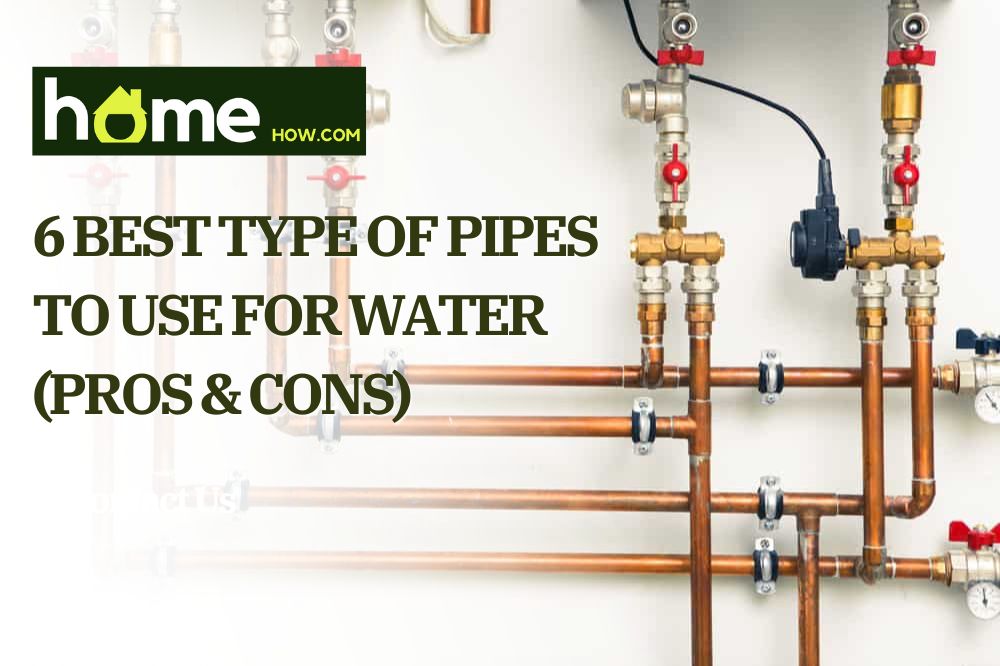Have you ever wondered what pipes ascertain an excellent water system? A good drainage and delivery system is essential when structuring or restructuring houses. And there are plenty of options to choose from while deciding what water pipes you want to use for your home. Plumbing pipes have evolved with time, from being made from materials like clay and straw in Ancient Greece to more reliable materials like copper and cast iron.
Due to the variety of options for plumbing pipes and their functions or suitability for different situations, you might get confused about what pipes to use for water in your home. However, whether or not you’re hiring a plumber, you should know what’s going on with your house structuring and what pipe materials to use, as a wrong choice might result in specific problems later on.
So, are you at the crossroads of making a good water pipe choice? Below is a breakdown of some common types of pipes and their features that will make picking one that fits your space less of a hassle.
Types of pipes for your home water supply
Why should you take note of the types of pipes to use in your house? First, different pipes are made of different materials, each most suitable for one thing more than others. For instance, the lines used for carrying drinking water into faucets are made of different materials from the ones used for drainage. So while some homes’ plumbing systems may be made of one pipe material, others have several, depending on their function.
Also, if your home was built a long time ago, perhaps in the early 20th century or a little later, you might want to check if lead or polybutylene (PB) pipes were installed in the water system. If they were, you might want to change the pipes since lead is unhealthy for water, and polybutylene is susceptible to bursting. Here is an overview of the pipes that are commonly used now:
1. Polyvinyl chloride pipes (PVC) pipes
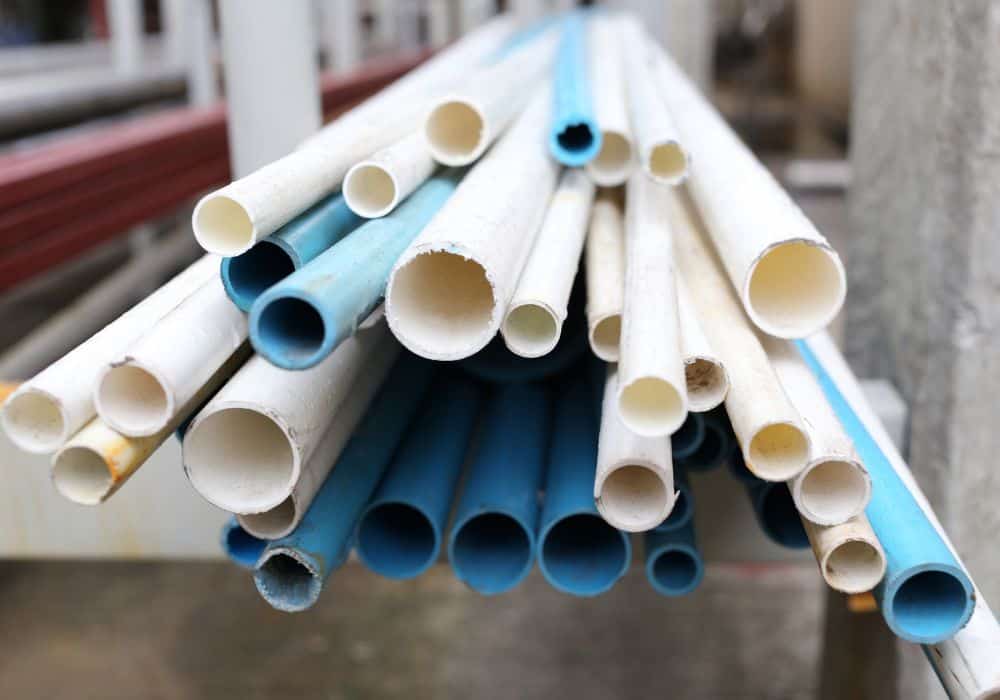
PVC is a common pipe type made of plastic and is primarily used for drainage. It is also used for sinks, swimming pool lines, spas, shower drain, and irrigation piping. Its plastic material makes it indefinitely durable as it rarely gets damaged, rusty or corroded.
Furthermore, PVC pipes are lightweight, making them most preferred among other plastic tubes, and they are often used for a house’s main supply line. The pipe also can tolerate high water pressure and prevent the buildup of dregs and other blockages. PVC comes in different thicknesses known as schedules, and although it is primarily white, it may come in other colors too. The pipe schedules can be used to differentiate its uses; for instance, schedule 40 is commonly used for the main water supply.
Meanwhile, PVC is not suitable for carrying potable water, as its material, polyvinyl chloride chemicals, are toxic for drinking and have, for this reason, been restricted from use in certain countries. Likewise, the pipe cannot withstand hot water because of its plastic property. Otherwise, PVC is an excellent pipe choice and is relatively cheap and easily repairable.
Note: There are CPVC pipes (Chlorinated polyvinyl chloride pipes) that are designed to be more suitable for potable water piping, and are just slightly different from PVCs in functions and features.
2. Cross-linked polyethylene (PEX) pipes
The cross-linked polyethylene pipe, otherwise called PEX, is a flexible plastic used for hot and cold water supply lines. It is an easy favorite among professional plumbers, given its ability to curve and weave around walls, ceilings, and crawl spaces. Like PVC pipe, it is highly durable and tolerable to high pressure. In addition, its property makes the pipe expand which resists freezing or any form of blockages; it also accommodates less fitting than metal piping and, thus, guarantees an easy installation.
PEX is also color-coded to make it easier to identify the ones for hot and cold water; the red-colored pipes are for hot water, and the blue pipes are used for cold water. It comes in 1/2 and 3/4 inches diameters. The PEX pipe grants you an excellent plumbing option that is reasonably cheap, easy to use, multifunctional, and durable.
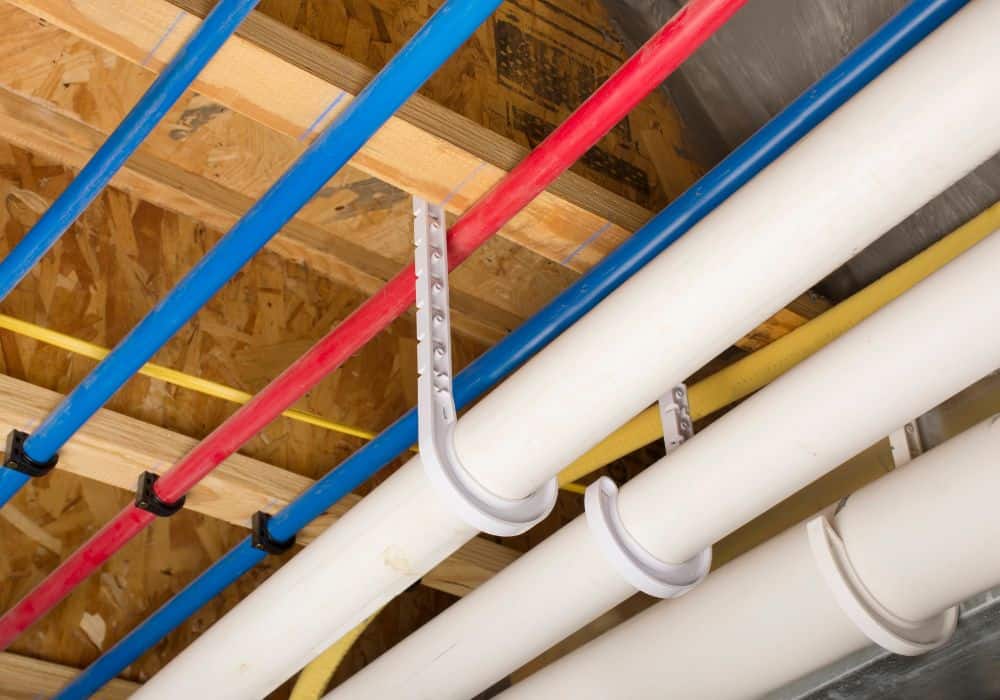
3. Acrylonitrile butadiene styrene (ABS) pipes
Acrylonitrile butadiene styrene (ABS) pipe is like PVC pipes in its features, but rather black and a bit softer. It is designed with thermoplastic resin and is cold-tolerant. ABS is majorly used to pipe vents and drain lines and has proven to be pretty long-lasting, aside from the fact that it may warp due to regular and direct sun exposure. It may also be noisier than other pipes, but it is largely a great choice.
4. Copper pipes
Copper pipe is one of the oldest types of pipes still used today, made of copper. It is known for being versatile, able to supply hot and cold water, is heat and corrosion-resistant with anti-microbial properties. It is used for showers, sinks, and other similar functions in homes.
This plumbing pipe is most suitable for potable water since it does not affect the water like plastic pipes. It is highly durable, has a lifespan of 50 years, and can be used in underground and aboveground water lines. However, when used underground, you must install sleeves on the pipe to protect it from being harmed by the soil. Its different pipe thicknesses, M, L, and K, can be used for water supply but have various suitable applications. The K copper pipe, the thickest of the copper variety, is used underground and for high pressure while M, the thinnest, is used for heating. Copper can be connected in diverse ways, including push-fit or compression fittings.
A downside to this plumbing option is its cost. Copper pipes can cost twice as much as plastic pipes, which may be due to their material. So, while copper pipes are a good choice for you, they may not fulfill your wish of picking a significantly cost-effective plumbing option.
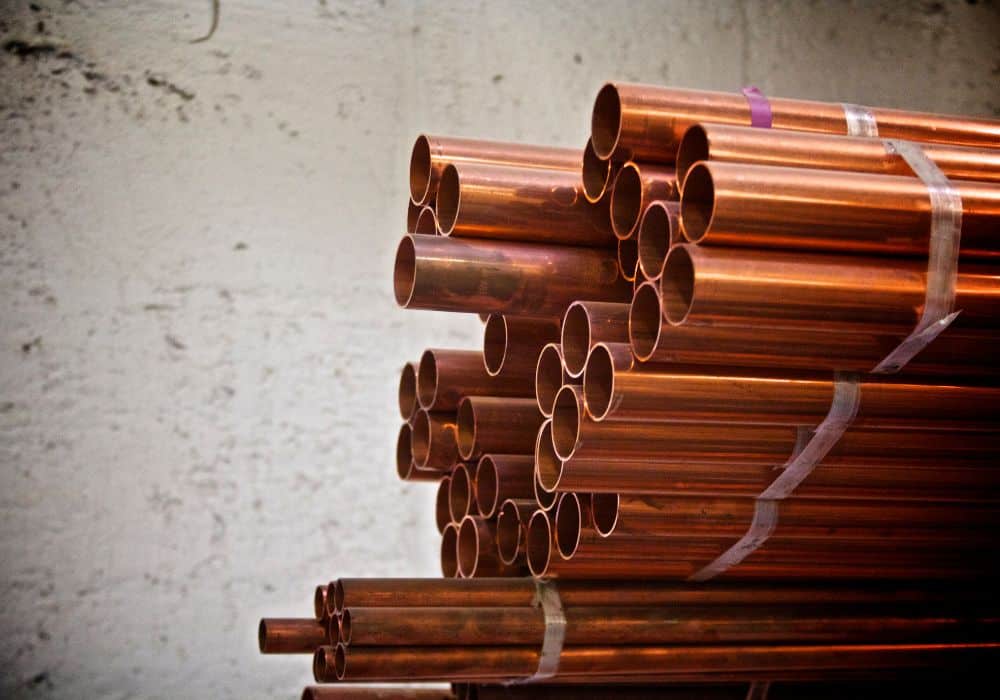
5. Cast iron pipes
Cast iron pipes are rarely used in the construction of modern houses, as they were prevalent only in the early 20th century; however, this does not downplay their effectiveness. Cast iron is a grey piping that is exceptionally durable, heat-resistant, and less noisy than other pipes. Although it can mostly be found in an old houses, it is used for drainage and water supply in commercial buildings and home repairs today. Unfortunately, cast iron pipes are susceptible to corrosion and rust and may affect the state of the water system once they start degrading.
6. Galvanized steel pipes
These pipes are made of steel with zinc coating. And similar to cast iron, they are commonly found in older homes and are less likely to be used to construct new houses. Galvanized steel pipes grew out of usage because of the complexity involved in installing them and the time used in cutting and threading them.
On the good side, however, galvanized steel pipes have a life span of 40 years, help prevent corrosion, and are used for gas and water supply. However, since they are rarely sold recently and are primarily in old homes, there’s every chance your galvanized steel pipe is already too old and requires immediate change if you have any installed in your home. Furthermore, once it is old, the pipe corrodes and starts to leak, which may result in problems in the house. Hence, it is beneficial to completely change your old plumbing and replace it with PVC, PEX, copper, or ABS pipes.
Up-to-Date Plumbing Costs
Do you keep wondering how much home repiping can set you back? You can employ a plumbing cost estimator to calculate ballpark expenses if you are good at math. On average, American homeowners spend between $2,000 to $15,000, but most bills don’t surpass $5,000. As the prices fluctuate from region to region because of the labor rates and home to home because of the project’s peculiarities and materials selected, it is better not to rely much on average rates. You can either do your best to consider possible cost items or delegate this task to the pros. They know the ropes of the installation process and have the experience to make allowance for all its pitfalls.
How to choose the plumbing pipes
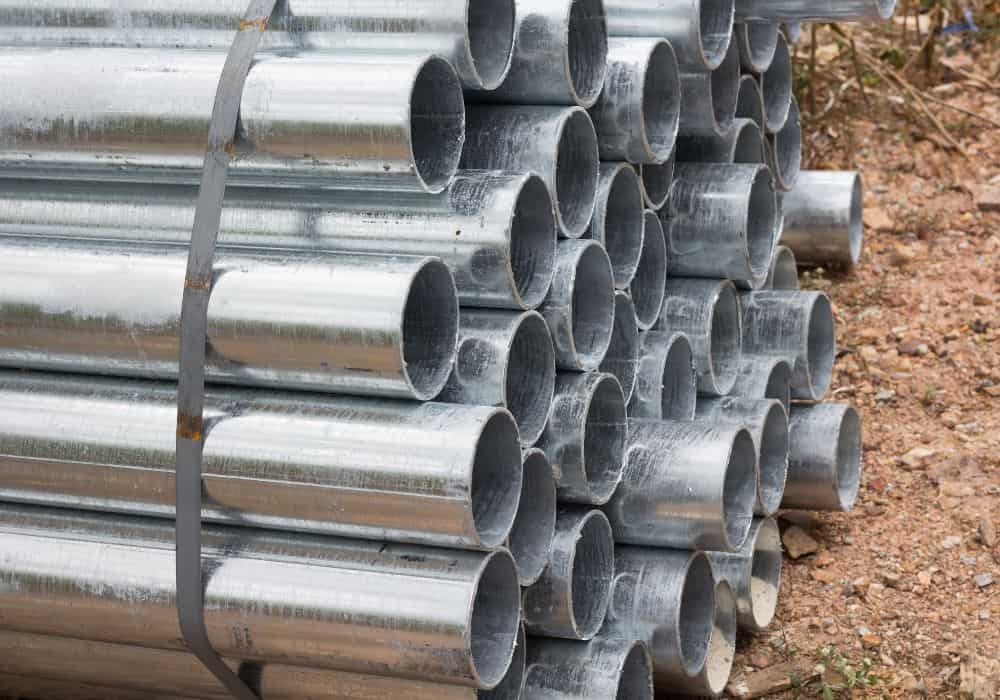
Now that you know the various pipe options you have for water, you must know how to make the right choice for your piping projects. The essential factors for consideration when taking this decision is determining the function of the pipe and the space in your house you are to use it. Examine the functions of the different pipes available and decide which one best fits into your room and fulfills the role you need it.
Also, another factor to consider is the cost. Although more expensive pipes tend to last longer, there are also cost-effective pipes like PVC that satisfactorily performs piping functions well. If you’re still confused about what to choose, then you should contact a professional plumber that could advise you on the decision to make for your project. Meanwhile, it is advisable to let a licensed plumber do your work if you’re not conversant with plumbing projects and how to perform specific plumbing tasks like changing pipes and retrofitting.
Conclusion
Learning about different pipe types will come in handy whether you’re a homeowner or a commercial worker. As the world evolves, we rediscover better means of transporting water to ensure water passes throughout the home smoothly and is healthy for use. Thus, we have moved from clay and lead pipes to galvanized steel, copper, and PVC.
Occasionally, you may need to perform some DIY plumbing tasks in the house or advise someone on it, so it is necessary to stay informed and know their different functions and features. Always contact a plumbing expert if you need to change the pipes of your entire water system. And also, take proper caution when you notice a leak or corrosion in your pipes.
